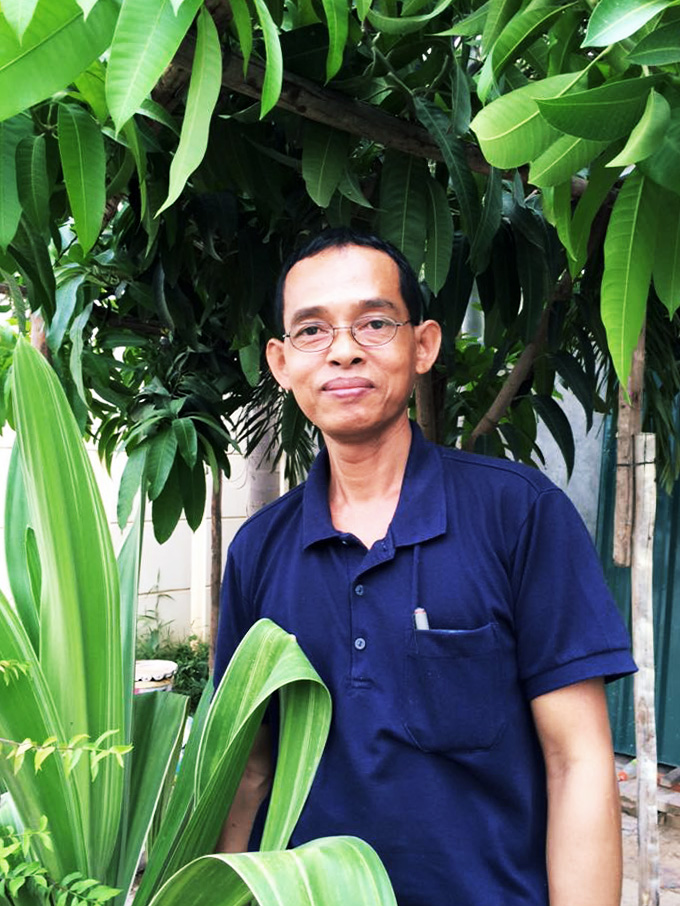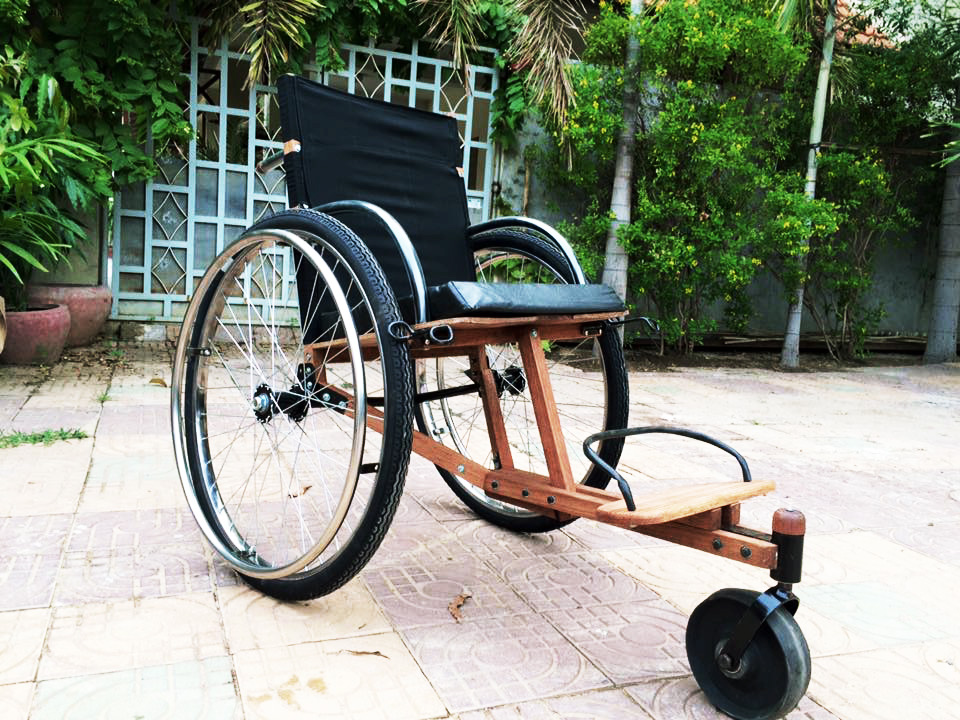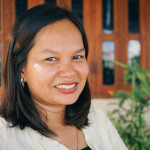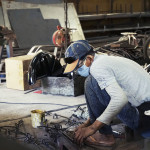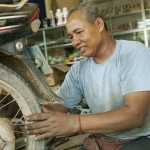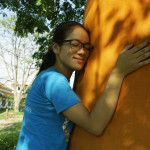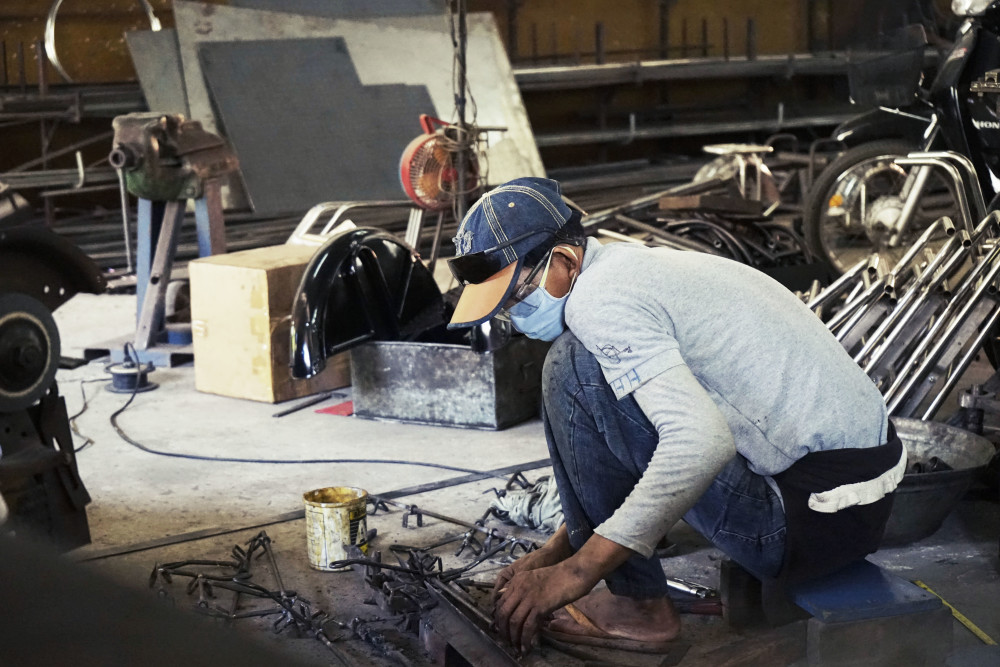
Keo Sovann
Mekong Wheelchair
Story
Jesuits, who landed in Cambodia 30 years ago with its first mission to help Cambodian refugees, established a vocational training center, Banteay Prieb (Center of Dove), for people with disabilities from war and landmine accidents. Mekong Wheelchair Production is located in one of the buildings of Banteay Prieb, which has become a source of hope for people with disabilities in Cambodia. They produce wheelchairs designed for Cambodia’s geographical features and handmade to fit each user’s physical conditions. The central part of Metta Karuna, a rural development project Joy of Sharing supports, is the distribution of these Mekong Wheelchairs. More than 1000 wheelchairs are produced every year by Mekong Wheelchair employees, most of them having a disability in real life. I had an interview with one of the only two employees with no disability, Mr. Keo Sovann (50), who has been with Mekong Wheelchair for 22 years since its beginning. I could recognize his long years of experience at a glance.
“When did you start working for the people with disability?”
I studied physiotherapy at a university in Thailand. I worked for a Thai NGO in the production of prosthetic legs and crutches for those who lost their leg in landmine accidents. Later, in July 1993, I returned to Phnom Penh to work for a small British NGO with five people. While helping people with disabilities with physiotherapy, we could think about the need for Mekong Wheelchairs. It is easily seen in rural areas that people with disability are not able to go outside, even with wheelchairs. So we thought we needed to change the shape of wheelchairs depending on the lay of the land throughout all regions of Cambodia, and we required different types of wheelchairs to match the variety of disabilities, for example, polio, leg amputation, paralysis of legs, and club foot. It also needs to be designed according to age and sex, which are differentiated by lifestyles and types of work and activity they do.
“Why did you work for a long time and still work for them?”
I wanted to become a journalist when I was young. But by chance, I studied about the disabled and physical development, which fascinated me. Then, I could see many times the people without disability ignoring the people with disability. I even saw a family abandon their family member just because of the disability. They are the same people who live with us in our society and should come out of their house to live in society together. That is why I studied physiotherapy and started to make prosthetic legs, crutches, and wheelchairs.
“Can you tell us about how you designed the Mekong Wheelchair at first?”
We grouped with “Motivation” for the first three months and investigated wheelchairs. Later, we invited more people – designers, users, physiotherapists, and engineers – to discuss the production of special wheelchairs for Cambodia. We came up with three types of wheelchairs, i.e., four-wheel, four-wheel folding, and three-wheel. After a discussion with other NGOs (AAR, VI, JSC) who showed an interest in wheelchairs, three-wheel was chosen, and JSC started its production in 1994. This is when I became an employee of JSC Mekong Wheelchair. Most foreign NGO engineers who worked in the early days have left, and now Cambodians have taken over to continue the production. Q&A process.
“How do you select who will receive Mekong Wheelchairs?”
Firstly, we get applications from all JSC coordinators in Cambodia. They are reliable partners to us because each coordinator goes out to villages to check and see if there is anyone with disability or sickness in their area and talks with them in person about what they need. There is another team in Banteay Prieb that does similar work; it is the outreach team. When they go to the rural area to visit the graduates of Banteay Prieb, they also examine how many people need new wheelchairs or any replacement and repair. Our priority beneficiary is the physically disabled people we find through these processes who are the poorest and in most need of help. But we also have requests from other NGOs or individual inquiries.
“What is the level of disability awareness in Cambodia?”
In general, it has gone up compared to the past. But still, there are very few willing to work with people with disabilities. We only have five people who completed a formal education in physiotherapy. And in rural areas with a lack of awareness, they think they can stay home and have lots of medicines when they get sick or disabled. They don’t know that it helps to do exercises, receive treatment, meet other people, and be active.
“Tell us about your teamwork in Mekong Wheelchair.”
Mekong Wheelchair Production employs 18 people, and 16 have disabilities. We all have weaknesses, so we have to endure difficult times. It would have been too difficult if I worked by myself and only for my profit. However, we have always been happy because we worked together to complement each other and believed that our work would bring good outcomes for the weak and the isolated.
“When do you feel happiest while working here?”
I like working with these people here who have the same dream. Anything can make you happy, even with disabilities, poor skills, or poor language, if you have the same goal and dream of a better world together and try to understand and be considerate.
